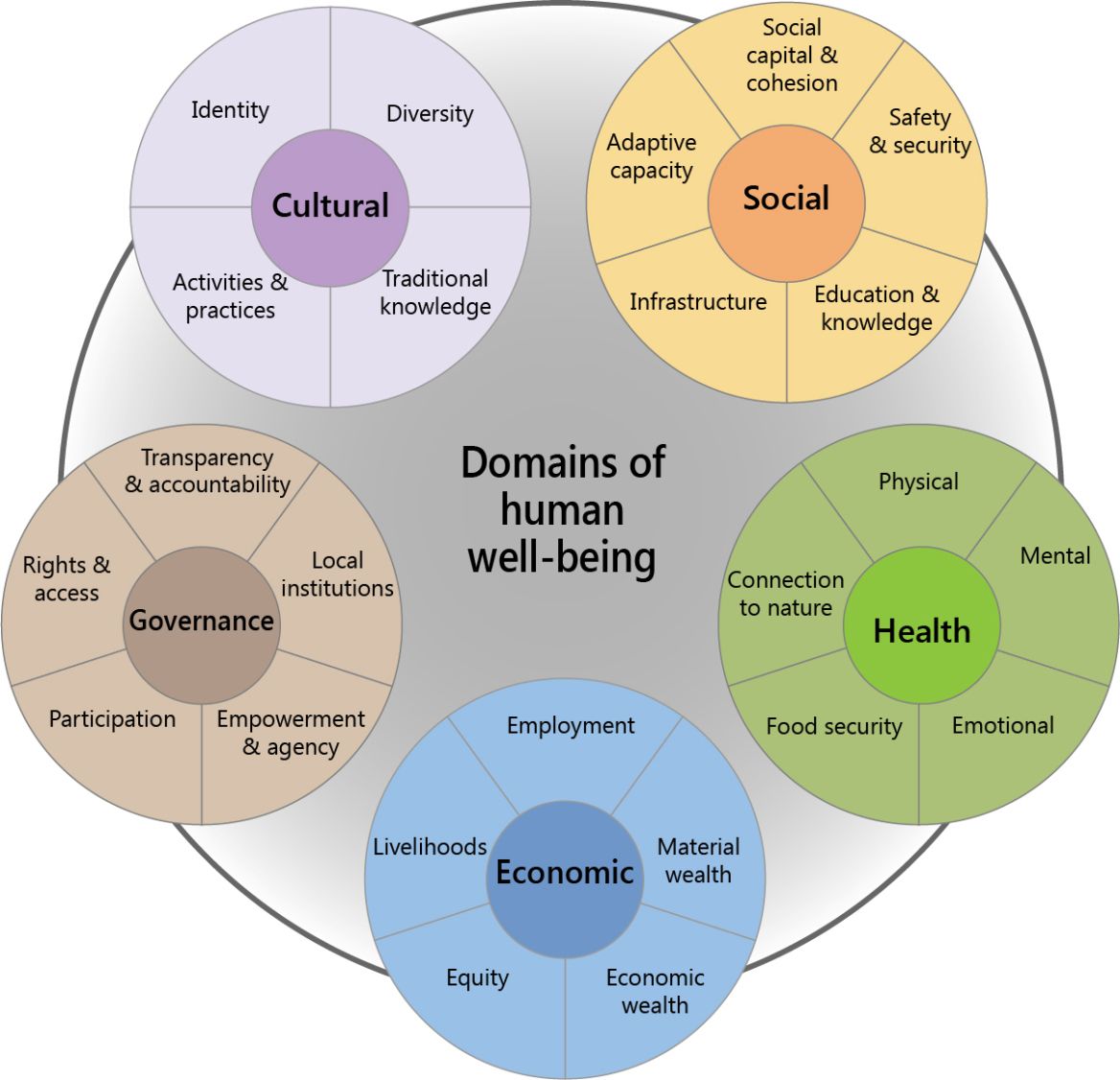How To Balance Life Domains
Balancing life domains is not easy.
How can it be?
We have so many domains to balance and so many activities within each domain. Life domains should be regularly assessed and evaluated, then adjusted by setting goals.
The following are strategies or techniques that can be used to balance life domains.
Three Domains Of Life Characteristics:
The existence of a nuclear membrane distinguishes the Eukarya domain from the Archaea domain and the Bacteria domain, both of which lack one the Archaea and Bacteria domains are distinguished by biochemistry and RNA markers. Each one of the three domains of life identified by scientists presently has rRNA that is distinct to them, and this information alone lays the groundwork of a three-domain system. A six-kingdom system of life exists in addition to the three-domain system, namely Archaebacteria, Eubacteria, Protista, Fungi, Plantae and Animalia.
The Three Domains Of Life
When scientists first started to classify life, everything was designated as either an animal or a plant. But as new forms of life were discovered and our knowledge of life on Earth grew, new categories, called Kingdoms, were added. There eventually came to be five Kingdoms in all Animalia, Plantae, Fungi, Protista, and Bacteria.
The five Kingdoms were generally grouped into two categories called Eukarya and Prokarya. Eukaryotes represent four of the five Kingdoms . Eukaryotes are organisms whose cells have a nucleus a sort of sack that holds the cells DNA. Animals, plants, protists and fungi are all eukaryotes because they all have a DNA-holding nuclear membrane within their cells.
The cells of prokaryotes, on the other hand, lack this nuclear membrane. Instead, the DNA is part of a protein-nucleic acid structure called the nucleoid. Bacteria are all prokaryotes.
However, new insight into molecular biology changed this view of life. A type of prokaryotic organism that had long been categorized as bacteria turned out to have DNA that is very different from bacterial DNA. This difference led microbiologist Carl Woese of the University of Illinois to propose reorganizing the Tree of Life into three separate Domains: Eukarya, Eubacteria , and Archaea.
Woese is currently working to unearth that root. But he says the search for the universal ancestor is a far more subtle and complex problem than most people realize.
Whats Next
Recommended Reading: How To Buy And Sell Domain Names On Godaddy
Three Domains Of Life: Characteristics And Differences
Table of Content
The earth is 4.6 billion years old and microscopic life is considered to have primarily arisen around 3.8 and 3.9 billion years ago. Microbes exclusively accounted for 80 percent of the earths history. Microbial life is still the most common kind of life on the planet. There have been numerous attempts to categorize living beings since the birth of humanity.
Prior to the discovery of the three domains of cellular life, life on the planet was divided into two groups: Prokaryotae or Monera and Eukaryotae. Animals, plants, fungi and protists were classified as eukaryotae, whereas bacteria were classified as Prokaryotae or Monera.
Carl Woese, an American scientist and physicist, split Prokaryotae into Archaea and Bacteria in 1990. The division of Prokaryotae into Archaea and Bacteria is owing to the belief that none of them are ancestors of the other. While they have certain common characteristics, they also have some unique characteristics.
As a result, the three-domain system, also known as the three-domain system of life or 3 domains of living things, was created to divide life on the planet into three distinct domains: Archaea, Bacteria and Eukaryote. It is, in essence, a biological categorization of the three domains of life-based on distinctions in their 16S rRNA genes.
Domain In The Tree Of Life

In the most widely accepted theme of the organization of life, a domain is the first subdivision, as seen in the image below.
A domain is then further broken up into kingdoms. In the domain Eukarya, for instance, there are four kingdoms: Animalia, Plantae, Fungi, and Protista. Each of these kingdoms is then broken down into smaller groups, all the way down to individual species.
You May Like: How To Transfer Domain To Google Domains
What Are The Three Domains Of Life Brainly
1. The three domains of life are archaea, bacteria, and eukarya.
Domains are the highest taxonomic ranks in the three-domain system of biological classification. The three domains of life are archaea, bacteria, and eukarya.
2. Archaea are single-celled organisms that are found in extreme environments.
Domains are the highest level of classification in the three-domain system. The three domains are the Archaea, the Bacteria, and the Eukarya. Archaea are single-celled organisms that are found in extreme environments. Bacteria are also single-celled organisms, but they are found in a variety of environments. Eukarya are organisms that are composed of cells that have a nucleus.
3. Bacteria are single-celled organisms that are found in all environments.
Bacteria are single-celled organisms that are found in all environments. They are classified into two domains, the Eukarya and the Bacteria. The Eukarya includes all organisms with eukaryotic cells, while the Bacteria includes all organisms with prokaryotic cells.
4. Eukarya are single-celled or multi-celled organisms that are found in all environments.
Domains are the highest level of classification in the biological taxonomy. There are three domains: Archaea, Bacteria, and Eukarya. Eukarya are single-celled or multi-celled organisms that are found in all environments.
5. All three domains of life are important for the maintenance of life on Earth.
What Characteristic Of The Three Domains Of Life Are Similar
Three domains of living things, archaea, bacteria, and eukarya, are organized by shared characteristics fundamental to life: cellular organization, biochemistry, and molecular biology.
What are the 3 domains and what do they mean?
Archaea : oldest form of prokaryotes . Ancient bacteria often live in extreme conditions. Bacteria : all other forms of bacteria Eukarya : all eukaryotes
Recommended Reading: How Do I Create My Own Domain
Why Choose A Life Domain
.life overview
Bring your online presence to life.If your organization is focused on a passion for lifewhether youre a health brand, a climate change advocate, a counsellor or a travel branda .life domain extension can be an effective digital foundation.Thousands upon thousands of organizations have registered .life domain names, using the extension creatively whether or not life is part of their official brand name.
.life facts, stats & history
Many businesses that have a .life domain name have life in their brand name, but .life is also often use to simply showcase that your focus is on supporting happy, healthy, passionate lives in a variety of ways.Since Google treats all new domain extensions the same, you dont have to worry about SEO when it comes to .life domains. In fact, because it’s more readily domains youre more likely to get the the exact .life domain name that you want.
What Is A Web Development Life Cycle
A web development life cycle concerns all the stages that go into building the website, from formulating the idea to coding and designing to deploying and maintaining. It is the standard or methodical step to follow to achieve a well-functioning website.
What is the life of a web site?
The life of a Web site can be ephemeral and the characteristic of being an almost single document, without availability of copies butwith universal access beyond the traditional concept of a documentary support and goes beyond of thesimple storage of an electronic document.
What is pending delete in domain life cycle?
The registrar sends a command to the Registry for deleting the domain, the domain now enters the last phase of the life-cycle called Pending Delete command. The domain stays in this stage for 5 days.
Don’t Miss: How Do You Get A Gov Domain
Genome Biology: Further Support For The Three
We again introduce a milestone paper: in 2012 Novoa et al. described a major role for tRNA modifications in codon usage in the different domains of life . In this study they showed the eukaryotic absence of a correlation between tRNA gene content and codon usage to be only superficial. This incorrect impression was due to ignoring wobble rules in earlier work, researchers were looking for correlation using regular Watson-Crick pairing only. Furthermore, Novoa et al. showed that each of the primary domains has its own typical codon usage as a result of domain-specific anticodon modification patterns. What are the domain-specific characteristics? In short, in eukaryotes inosine is used in many tRNA anticodon first-positions, in the Archaea inosine is not used at all, and in Bacteria inosine is only used in the anticodon first position in one codon box . This use determines domain-characteristic codon usage patterns.
How Long Until A Domain Is Available After It Expires
A domain typically enters Redemption about 45 days after its expiration date if it is not renewed or purchased by a 3rd party . However, certain top-level domains may enter redemption status the day after the domains expiration date.
What happens to a domain after it expires?
Day 1 after expiration: The domain will be deactivated and parked, indicating that its registration has expired. Other services associated with the domain, such as email, may cease to function. You can renew the domain or set the domain up for auto-renew.
Can you buy an expired domain name?
Can an expired domain name be bought? Well, yes. Once a domain name is registered, it is not owned, but leased for a finite amount of time . Most of the time, a person or business will set up their domains to auto-renew with their reseller, to avoid having to worry about renewals.
Recommended Reading: Can I Move My Domain From Godaddy
Rooting From Comparative Molecular Biology
It was previously suggested that non-orthologous replacement had indeed occurred for the DNA replication machinery, with the ancestral DNA replication machinery in LUCA being replaced by non-homologous DNA replication proteins of viral origin either in Bacteria or in Archaea/Eukarya . However, this type of explanation cannot be easily generalized. It seems unlikely that multiple non-orthologous replacements can explain all other major differences between archaeal/eukaryal and bacterial analogous but non-homologous systems! In the case of the DNA replication machineries, it is simpler to imagine that two versions present in modern cells were independently transferred from viruses to cells, once in the bacterial lineage and once in the archaeal/eukaryal lineage . For instance, our preliminary analyses of universal proteins sequence alignments indicate that the Lokiarchaeon is probably neither an early branching archaeon nor a missing link between Archaea and Eukarya . Similarly, other analogous, but non-homologous, systems, such as the two distinct rotary proteins involved in ATP synthesis by F°/F1 and A/V ATPases, might have originated independently in the bacterial and in the archaeal/eukaryal lineages .
Community Quality Of Life Survey

This Community Quality of Life Survey is a self-report survey for adults over 16 years old, examining their identity, sense of community, civic engagement, social action, volunteering, loneliness, and subjective wellbeing.
It provides an overall idea of whether this domain is imbalanced due to too little community involvement. It includes information on social cohesion, community engagement, and social action.
A copy of the full scale can be found on GOV.UK.
You May Like: How Do I Get A Domain For My Website
Root Of The Eocyte Tree
The eocyte tree root may be located in the RNA world that is, the root organism may have been a ribocyte . For cellular DNA and DNA handling, an “out of virus” scenario has been proposed: storing genetic information in DNA may have been an innovation performed by viruses and later handed over to ribocytes twice, once transforming them into bacteria and once transforming them into archaea.
Although archaeal viruses are not as well-studied as bacterial phages, it is thought that dsDNA viruses led to the incorporation of the viral genome into archaeal genomes. The transduction of genetic material through a viral vector led to an increase in complexity in the pre-eukaryotic cells. All these findings do not change the eocyte tree as given here in principle, but examine a higher resolution of it.
The Elusive Root Of The Tree
A major problem in drawing the universal tree of life is the position of the root. The tree is rooted between Bacteria and Archaea/Eukarya in the classical Woese tree . This rooting was initially supported by phylogenetic analyses of protein paralogs that originated by duplication before LUCA . This rooting was criticized in the 1990s because the bacterial branches are much longer than the other two branches in the trees of these protein paralogs . Furthermore, the elongation factors and V/F type ATPase subunits data sets, as well as other groups of paralogs that also used to place the root between Bacteria and a common ancestor of Archaea and Eukarya were saturated with mutations . Therefore, it was unclear if this rooting reflects the real history of life on our planet or if it is due to a long branch attraction artifact, e.g., the bacterial branch being attracted by the long branch of the outgroup sequences of the paralogs. Statistical analysis of slowly evolving positions in the two paralogous subunits of SRP confirmed that the bacterial rooting obtained by more classical phylogenetic analyses with SRP was due to a long branch attraction artifact and suggested that the root is located between Archaea/Bacteria and Eukarya however, this analysis was not followed up.
Read Also: How To Use Godaddy Domain On WordPress
The Biosphere: Life On Earth
Life! It’s everywhere on Earth you can find living organisms from the poles to the equator, from the bottom of the sea to several miles in the air, from freezing waters to dry valleys to undersea thermal vents to groundwater thousands of feet below the Earth’s surface. Over the last 3.7 billion years or so, living organisms on the Earth have diversified and adapted to almost every environment imaginable. The diversity of life is truly amazing, but all living organisms do share certain similarities. All living organisms can replicate, and the replicator molecule is DNA. As well, all living organisms contain some means of converting the information stored in DNA into products used to build cellular machinery from fats, proteins, and carbohydrates.
Spirituality And Assessment Scale
The SAS is a 28-statement scale using a 6-point Likert scale. In this assessment, spirituality is defined as an integrated dimension of ones being. It is considered to be a reliable and valid measure of the fundamental human dimension of spirituality .
It assesses interconnectedness, meaning, and purpose in life. It also looks at transcendence and inner resources.
A copy of the full scale can be found at ProQuest.
Read Also: How To By Domain Name
What Are Eukaryotic Cells
Ans: Archaea are single-celled organisms with distinct properties that set them apart from bacteria and eukaryotes. Because they lack cell nuclei, they are classified as prokaryotes. These organisms live in harsh environments such as saline water, deep-sea vents, hot springs, and beneath petroleum deposits. Energy is obtained by archaea from a variety of sources, including carbon dioxide, acetate, ammonia, sulfur, and even sunlight.
Ans: Bacteria are single-celled prokaryotes that divide into domains based on shape, size, habitat, and structure. Because they are membrane-bound and have fewer cell organelles, their structure and functions are simple. They are the worlds smallest entities, and thus microscopic. The staining technique is used to distinguish between Gram-positive and Gram-negative bacteria.
Ans: The three domains of life are:
Ans: Bacteria do not have cell organelles and do not have a nucleus . When the word prokaryote is broken down, pro means before and karyotype means nucleus. Prokaryotes, by definition, existed long before the evolution of a nucleus .
Ans The nucleus of eukaryotic cells contains chromosomes and DNA. Furthermore, eukarya have organelles such as mitochondria and chloroplasts that are all contained within a cell membrane.
Life Without A Nucleus
Bacteria and Archaea seem to have a lot in common at first. The organisms in these domains dont have a nucleus and therefore are called prokaryotes, a combination of the Greek words pro and karyon . Just as the name implies, the domain Bacteria contains bacteria. The microbes in the domain Archaea look like bacteria, but are different in a few essential ways. They often live in extreme places, like in the cold deep sea, hot geysers, or acidic volcanoes.
Also Check: What Is The Cheapest Domain Name Registrar
Characteristics Of Three Domains
The primitive conditions of the early earth exhibited a very hot climate with a lot of active volcanoes and a gaseous atmosphere of methane, carbon dioxide, ammonia, and water with oxygen present scarcely. Archaea and some bacteria evolved and acclimated to those primitive conditions of early Earth.
Cell Motility And The Possibility Of A Cytoskeleton

Movement of bacteria is typically by chemotaxis, a response to environmental chemicals. Some may respond to other stimuli such as light . They can move to or away from nutrients, noxious/toxic substances, light, etc., and achieve motility in several ways. For example, many move using flagella made up largely of the protein flagellin. Flagellin is absent from eukaryotic cells. On the other hand, the cytoplasm of eukaryotic cells is organized by a complex cytoskeleton of rods and tubes made of actin and tubulin proteins. Prokaryotes were long thought to lack these or similar cytoskeletal components. However, two bacterial genes that encode proteins homologous to eukaryotic actin and tubulin were recently discovered. The MreB protein forms a cortical ring in bacteria undergoing binary fission, similar to the actin cortical ring that pinches dividing eukaryotic cells during cytokinesis . This is modeled below in the cross-section near the middle of a dividing bacterium .
The FtsZ gene encodes a homolog of tubulin proteins. It seems that together with flagellin, the MreB and FtsZ proteins may be part of a primitive prokaryotic cytoskeleton involved in cell structure and motility.
Also Check: How To Buy Email Domain From Google